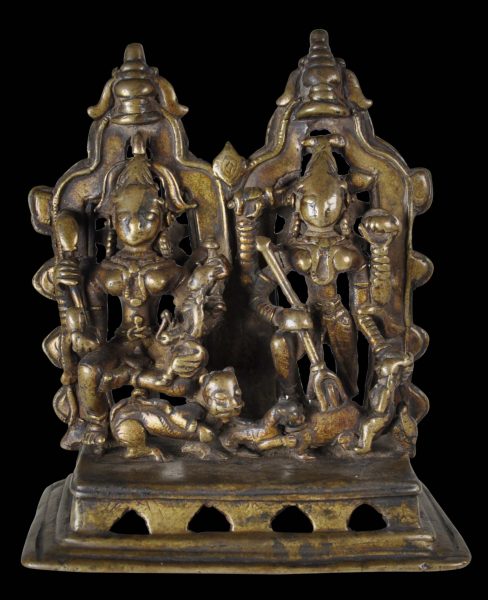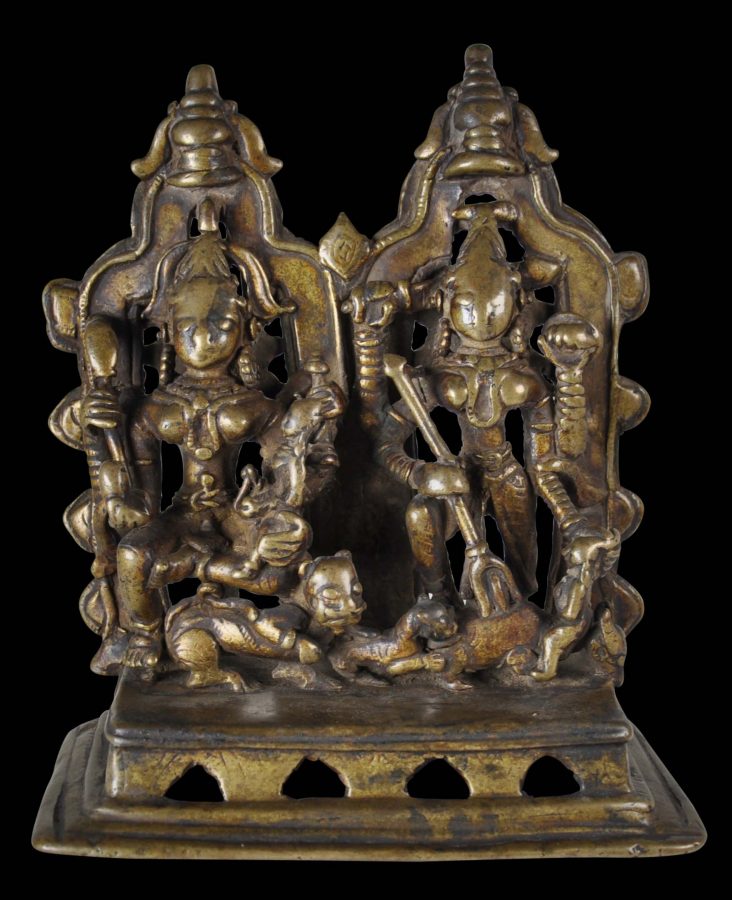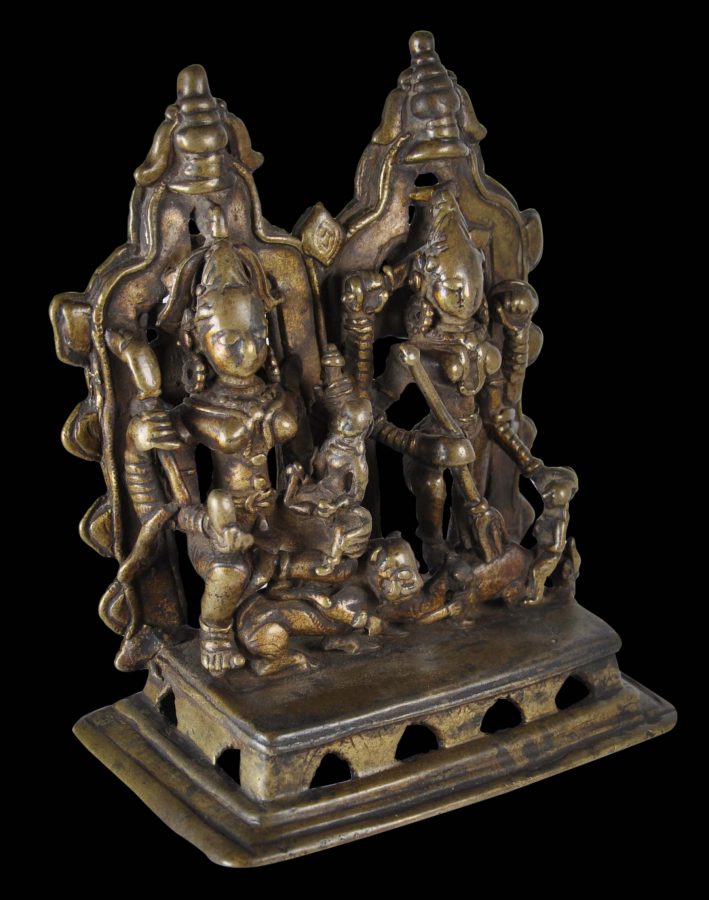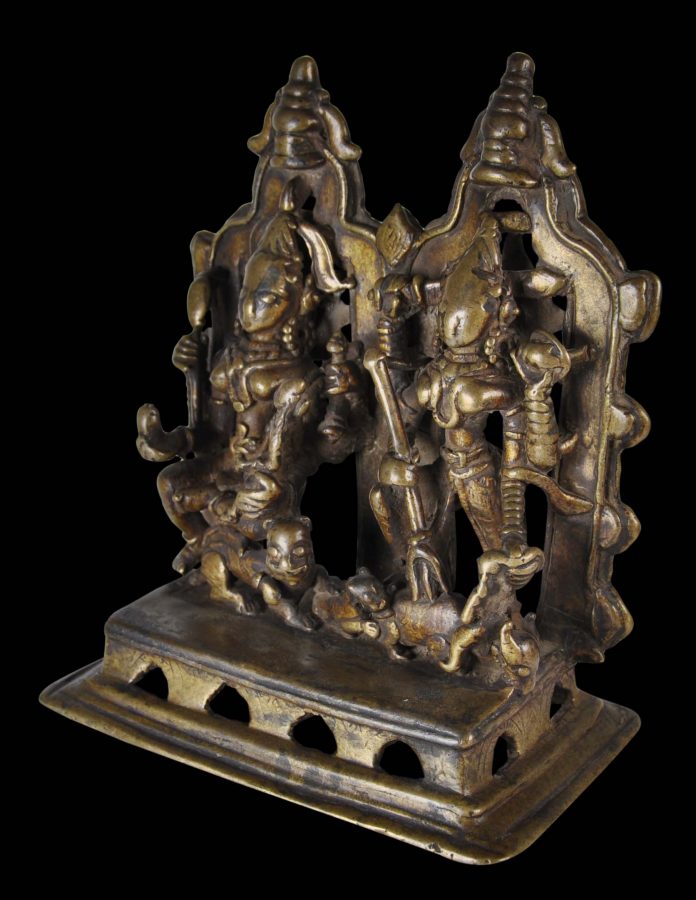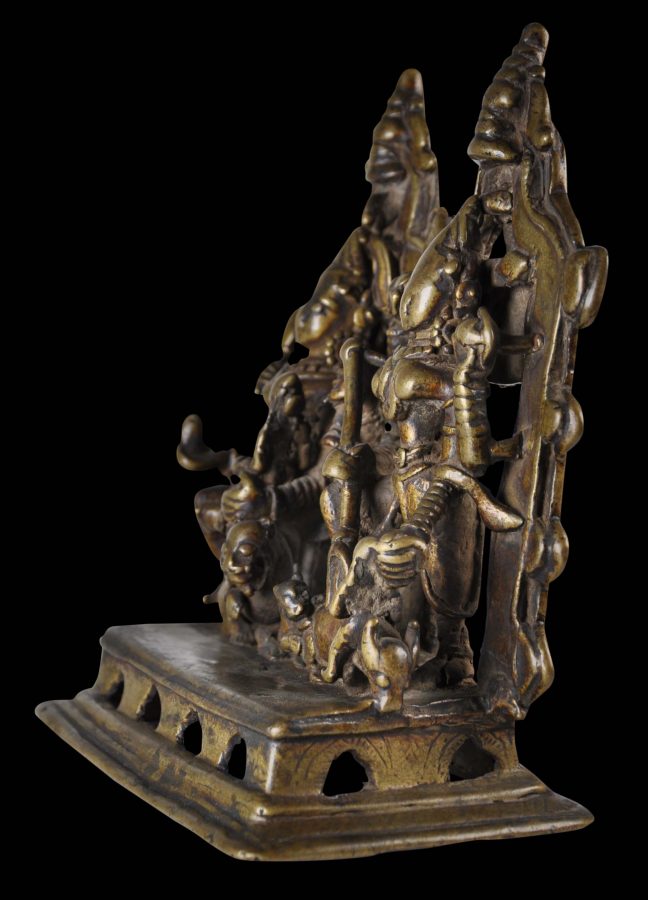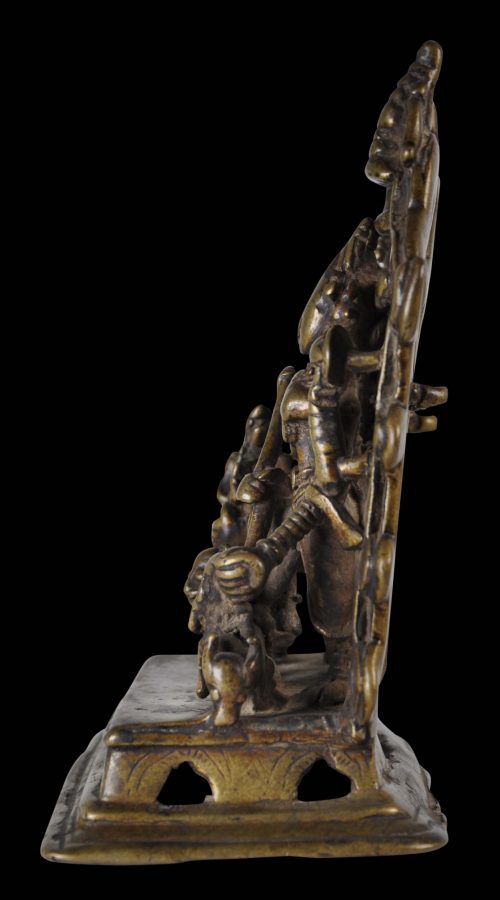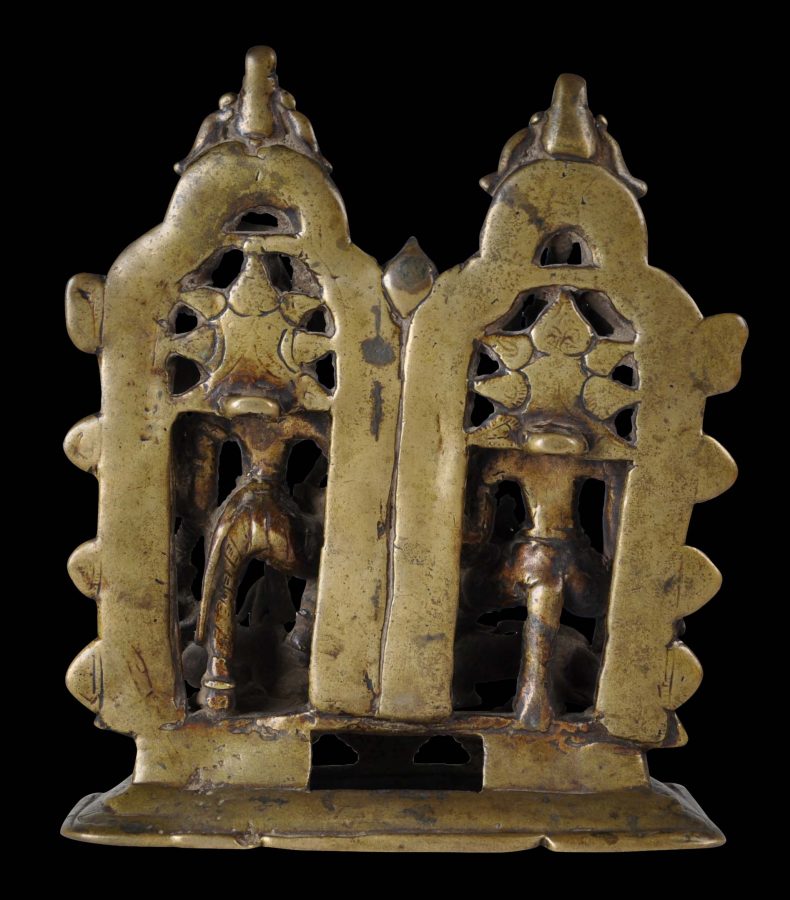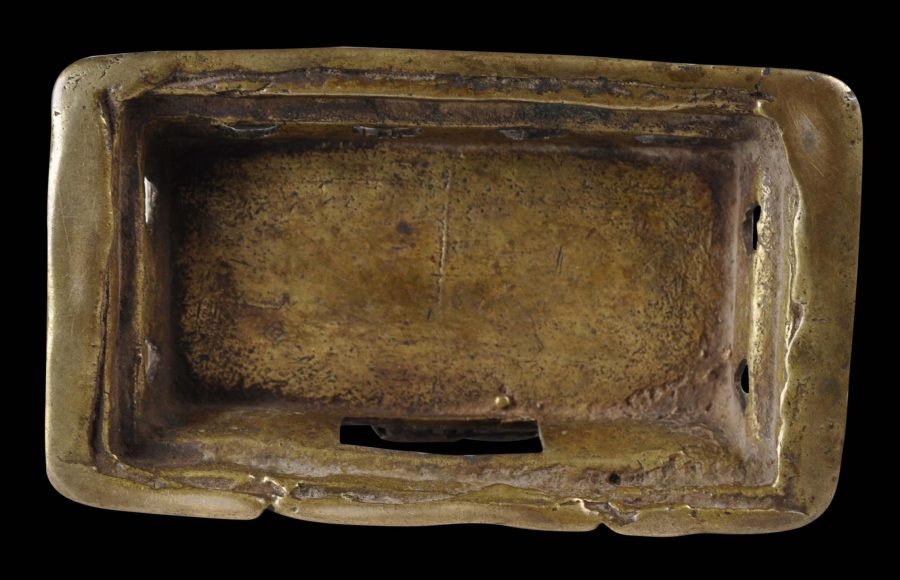Enquiry about object: 5418
Rare & Unusual Bronze Ambika & Durga Group
Western India 14th-15th century
length: 15cm, height: 17.5cm
Provenance
From the estate of a private English collector who acquired the bronze from Sotheby's London in July 1972. It was lot 52 of Sotheby's 'Primitive Art' sale of July 11, 1972. The original Sotheby's receipt is included.
This very unusual and impressive bronze group shows Ambika and Durga on a rectangular platform in front of two prominent, arched aureoles.
Ambika (or ‘Mother’ – in the Jain tradition, she is the yaksi or dedicated attendant deity of Neminath, the 22nd Tirthankara) is depicted in the left hand-side of the bronze. She sits on her lion vahana. She holds various attributes in her fours arms including a fly whisk and in her lower right hand she holds a mango, an identifying attribute. In the other, she holds one of her sons, either Priyankara or Shubhankara. Her full breasts and prominent hips emphasise the ‘mother’ aspect.
Durga, shown on the right side of the bronze, is depicted slaying the buffalo demon Mahisasuramardini. The severed head of the buffalo lays on the far right of the platform, and a small lion is shown attaching the rear of the buffalo. Durga has four arms and her attributes include a trident (shown planted into the back of the buffalo), a sword and a shield.
There are further surprising details – such as the knots in the belts around the waists of both deities.
Each of the aureoles is surmounted by a kalasha (longevity vase) finial.
Ambika and Durga, along with the goddesses Kali and Parvati, are associated with the Hinduist Shakta cult which emerged in the 9th century and which focussed on female divine energy and the centrality of the Divine Mother. It is likely that this unusual bronze, showing Ambika side-by-side with Durga, was commissioned by an adherent of this cult.
The bronze itself has excellent ritual (and thus authenticating) wear, and a honey-golden patina. There are no losses and repairs. It is an excellent and curious piece, with excellent provenance.
References
van Alphen, J., Steps to Liberation: 2,500 Years of Jain Art and Religion, Ethnographic Museum Antwerp, 2000.
Pal, P., Indian Sculpture, Volume 2 – 700-1800, Los Angeles County Museum of Art, 1988.
Pal, P., The Peaceful Liberators: Jain Art from India, Thames & Hudson/Los Angeles County Museum of Art, 1995.
Pal, P., Art from the Indian Subcontinent: Asian Art at the Norton Simon Museum, Yale University Press, 2003.


